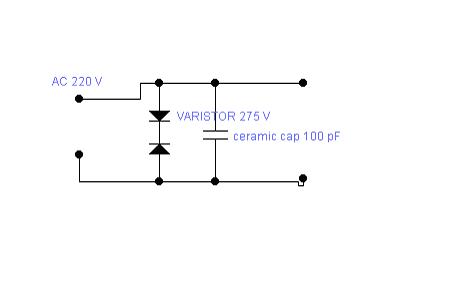catur_3414
Member level 1
ac varistor
Hi everyone,
I have a problem with a power supply, the varistor and ceramic capacitor is oftenly burnout. I have replace it with the same type its working normally, but not in along time (2 - 3 days), then its burned again.
can everybody tell me the cause of capacitor and varistor burnout.
thank you. sorry for my english.

Hi everyone,
I have a problem with a power supply, the varistor and ceramic capacitor is oftenly burnout. I have replace it with the same type its working normally, but not in along time (2 - 3 days), then its burned again.
can everybody tell me the cause of capacitor and varistor burnout.
thank you. sorry for my english.
